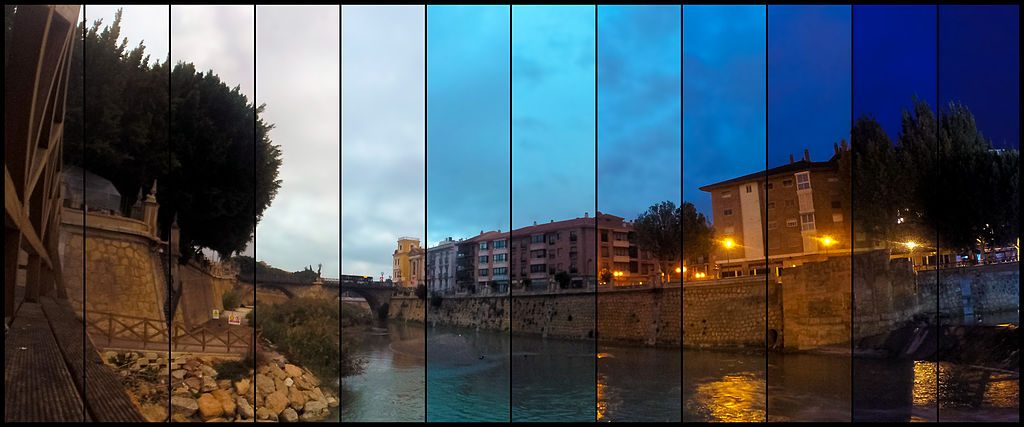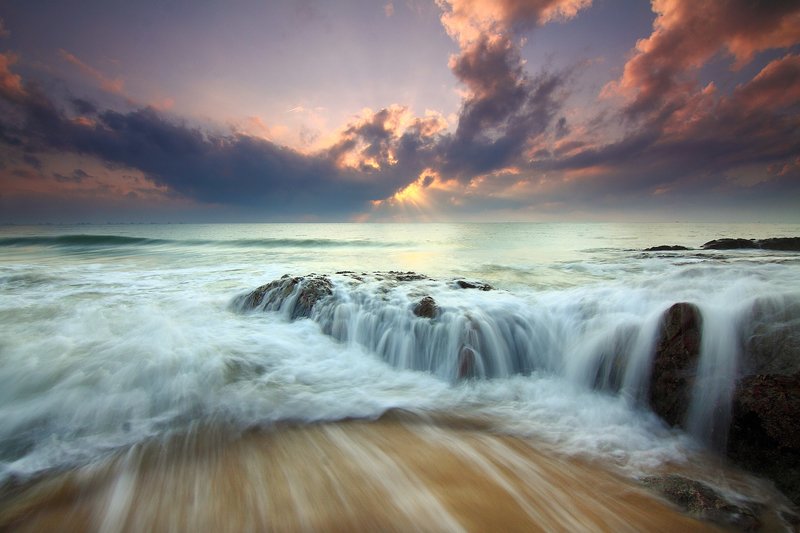Richard Gaspari – Beginner Tips for Time Lapse Photography
by Alex W.
This is a guest post from Richard Gaspari of creativephotoconnect. If you would like the opportunity to contribute to Click and Learn Photography please head over to our Contact page and give us an idea of what you would like to write about.
Richard Gaspari is passionate about photography techniques and history. He’s also the main contributor of an online project called Creative Photo Connect, where he writes guides and tutorials for beginners, as well as expert reviews on some of the most popular cameras on the market.
To say that time-lapse photography is fascinating would truly be an understatement. Capturing motion is a difficult undertaking. However, taking that move apart, frame by frame, second by second, to reveal, as they say, the beauty underneath, that’s truly a marvellous achievement. Time-lapse photography will become like second nature to you once the basics are made clear. Have no fear, because we’re here to lend you a helping hand. In this article, we are going to cover the ABC of time-lapse and, of course, give you a couple of tips on how to take breathtaking photos.
What Exactly is Time Lapse Photography?
Time-lapse photography can be considered a subgenre of what experts came to call still photography. Actually, it’s a rather quaint hybridization of still and action photography, where the stress falls on showcasing a subject which is either moving too fast or too slow. A fine example of time-lapse photography is capturing the moments before flower blooms or the slow transition from night to day.
Because everything in time-lapse is about timing and planning, the key lies in you choosing the best possible moment. More than that, putting together such a sequence is for naught if you aren’t able to express an emotion. Music, a background story, everything adds to the beauty of the moment.
On that topic, although time-lapse photography takes finesse, it’s a subgenre accessible to everyone, regardless if that person’s using a professional or entry-level camera.
Now, after our not-too-brief introduction on time-lapse photography, let’s move on to see exactly what you need to know in order to line up your first sequences.
Our Tips for Beginner’s Time-Lapse Photography
Charge your Batteries
We’re sure that this could end sounding like the kind of advice you would get from the person who sold you the camera, but, as it happens, time-lapse photography is a time-consuming and, not to mention, a battery-consuming endeavour. So, before setting off, make sure your camera’s fully charged. You should also consider taking some extra batteries with you just to make sure.
Take Care of those Intervals

In time-lapse photography, the interval between the images is a very important aspect. You will have to adapt it according to the subject of your sequence. For instance, if you want to create a sequence featuring one or more clouds which are moving at a very slow speed, you should consider setting your camera to take a picture once every 10 seconds. Moreover, if you’re trying to capture something that has a very slow real-time movement, adjust the interval to at least 30 seconds before each shot. Failing to do so, will result in choppy sequences.
The Tripod is your Best Friend
As you probably know by now, a tripod’s a useful asset in photography. Well, when it comes to time-lapse, the three-legged support becomes mandatory, because, who in the world can stand still for hours at an end trying to capture a sunrise or a flow blooming? After setting up the tripod and installing the camera, don’t forget to secure it to prevent accidents that might ruin your picture. For instance, you could try putting some extra weight on those legs, like sandbags or anything that could improve the ensemble’s stability.
Even more vital is how you move around the camera and tripod. We know that you’re curious to see how the process’s going but do try to tread with care because any kind of movement can disrupt the camera and then it’s bye-bye time-lapse.
You Might Like… Use a Tripod to Improve Your Photography
Secure the Lens Focus
One the most daunting tasks as a beginner time-lapse photographer is to figure out how to work with exposures and with the camera’s focus. As you probably know by now, your DSLR or mirrorless camera has two types of focusing modes – manual or auto. For the best possible results, set your camera to manual or autofocus while looking at your subject through the scope. After that, set your camera to manual and secure the lens focus in place. You could also consider securing your lens focus using a piece of tape.
Only Shoot in Manual

Image source: Good Free Photos
In time-lapse photography, keeping visual parameters constant such as ISO, exposure, speed or aperture are crucial to how your sequences will look in the end. One of the many things that you will need to deal with is flickering. This usually happens when there are small exposure changes from frame to frame. To counter flickering, set your camera to manual before capturing your sequence. That way, you will have made sure that you minimize the impact on the time-lapse sequence if there are any frame-to-frame changes.
You Might Like… Get Out of Autopilot – Why You Should Start Shooting in Manual
Music First, Photos Last
A picture may say more than a thousand words, but, sometimes, even a picture needs a little bit of help. Have you considered adding a dramatic flair to your time-lapse sequence? Please bear in mind that for this to work, you have to add the soundtrack before the actual movie. We know that it’s kind of difficult to do that considering that you don’t know what the subject of your time-lapse is, but this is the reason why we told you that this photography genre requires patience and careful consideration above all else.
Learn How to Focus
Because we’ve talked about the importance of focus in time-lapse photography, we should also mention the fact that you really must learn to master the art of manual focus. Why? Think battery life and glitches. Each time you line up a shot, the camera will refocus after each photo. This consumes power and, most importantly, it can create glitches in the sequence, thus derailing your efforts of creating a homogenous sequence.
Conclusion
As you can see, the basic concepts of time-lapse photography are not that hard to grasp – planning, patience, and a lot of practising. One more thing before we go – don’t forget about framing. Shooting a sunrise or a cloud gliding across the sky might be thrilling but work out the details before you start shooting.
Read More…
5 Must Buy Lenses for your Nikon DSLR
The Photographer’s Glossary – A Guide to Common Photography Terms
Gift Guide for Photographers – The Photographer’s Wishlist
From Capture to Completion – An Introduction to Lightroom
 |
 |
 |
 |

About Alex W.
Alex is the owner and lead writer for Click and Learn Photography. An avid landscape, equine, and pet photographer living and working in the beautiful Lake District, UK, Alex has had his work featured in a number of high profile publications, including the Take a View Landscape Photographer of the Year, Outdoor Photographer of the Year, and Amateur Photographer Magazine.
Thoughts on "Richard Gaspari – Beginner Tips for Time Lapse Photography"
 |
 |
 |
 |
You can Get FREE Gifts. Furthermore, Free Items here. Disable Ad Blocker to receive them all.
Once done, hit anything below
 |
 |
 |
 |